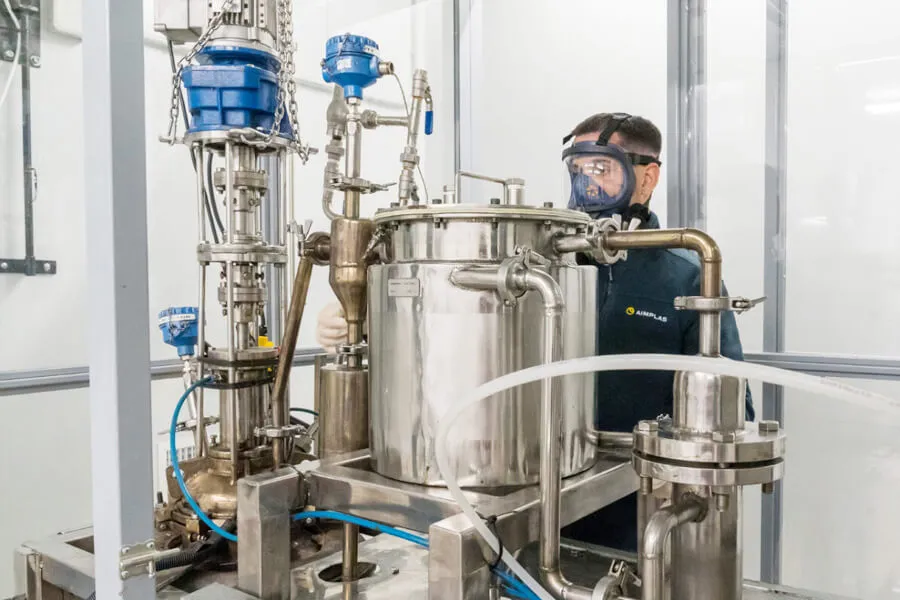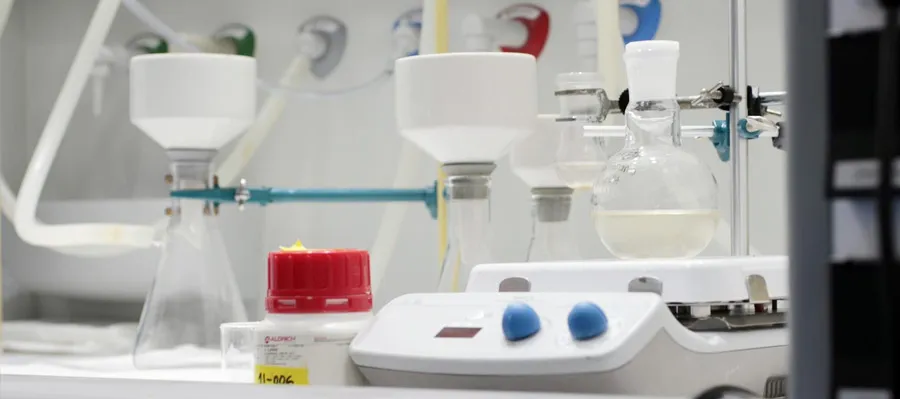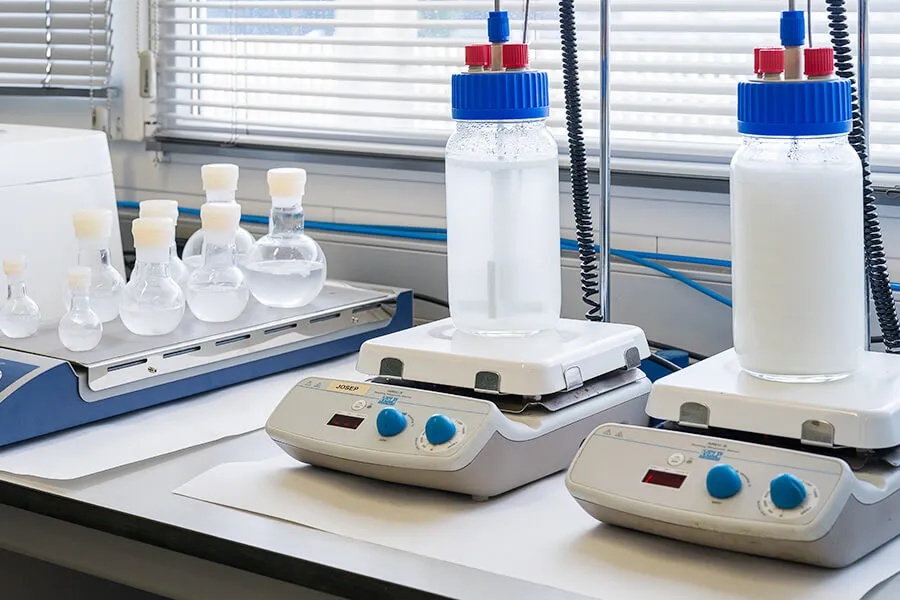Chemical recycling
Chemical recycling makes it possible to recover plastic waste that is highly degraded, may contain contaminants, or is too complex to be valorized through other means.
Chemical recycling technologies are being used to develop alternative solutions in conjunction with mechanical recycling to increase the quality of the recycled material, for specific applications such as food contact and when mechanical recycling is not viable.
Waste can thus be recovered and turned into new high value-added raw materials that would otherwise have been landfilled or incinerated. This solution is aligned with the circular economy strategy to promote the use of waste as a raw material.
Solutions
At AIMPLAS, we work with different chemical recycling technologies depending on the characteristics of the waste and the products to be obtained:
Thermal decomposition. Pyrolysis

Pyrolysis is a thermal cracking process that breaks down the polymer into monomers and other substances of interest for the chemical industry, thus making it possible to optimize recovery of plastic mixtures and highly degraded waste, and to introduce these materials back into the production process. Moreover, the process has a zero-energy balance because the reactor can be heated and kept operating with the gases produced by the process itself. To date, it is the most developed process at industrial level.
Solvolysis

Solvolysis involves the use of solvents, temperature and pressure to carry out the reverse reaction for producing polymers. Depending on the solvent used (methanol, ethylene glycol or water), different monomers or oligomers are obtained based on the chemical agent used for polymer chain scission.
Enzymatic/biological degradation

In this case, the polymer is broken down into smaller fragments, such as monomers and other substances of interest for industry. This degradation is carried out by microorganisms or the enzymes secreted. It is a very specific kind of break-up. The monomers obtained as degradation products can be recovered and used to make new products. This innovative technology is applicable to both bioplastics and conventional plastics, and can also be used in bioremediation.

